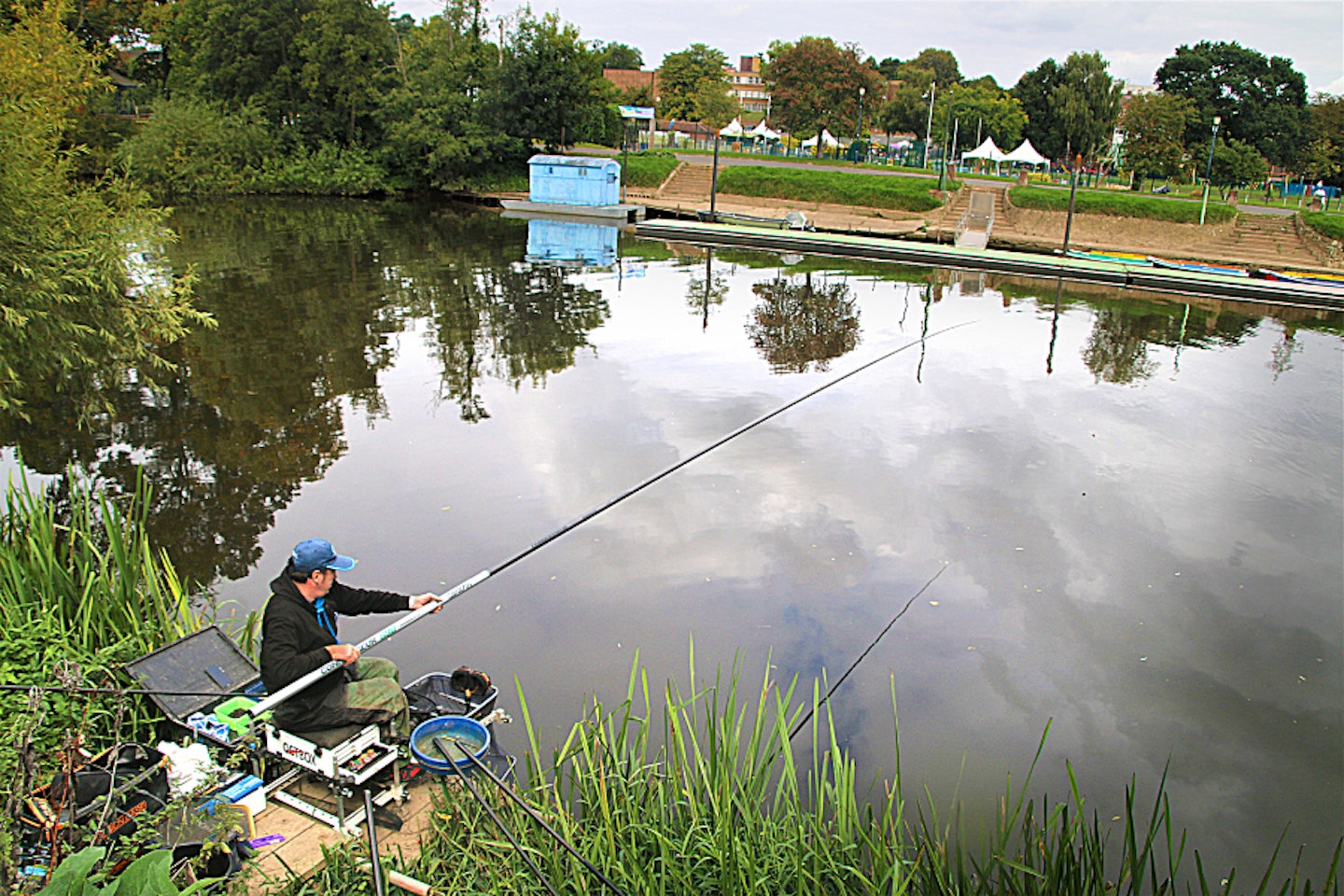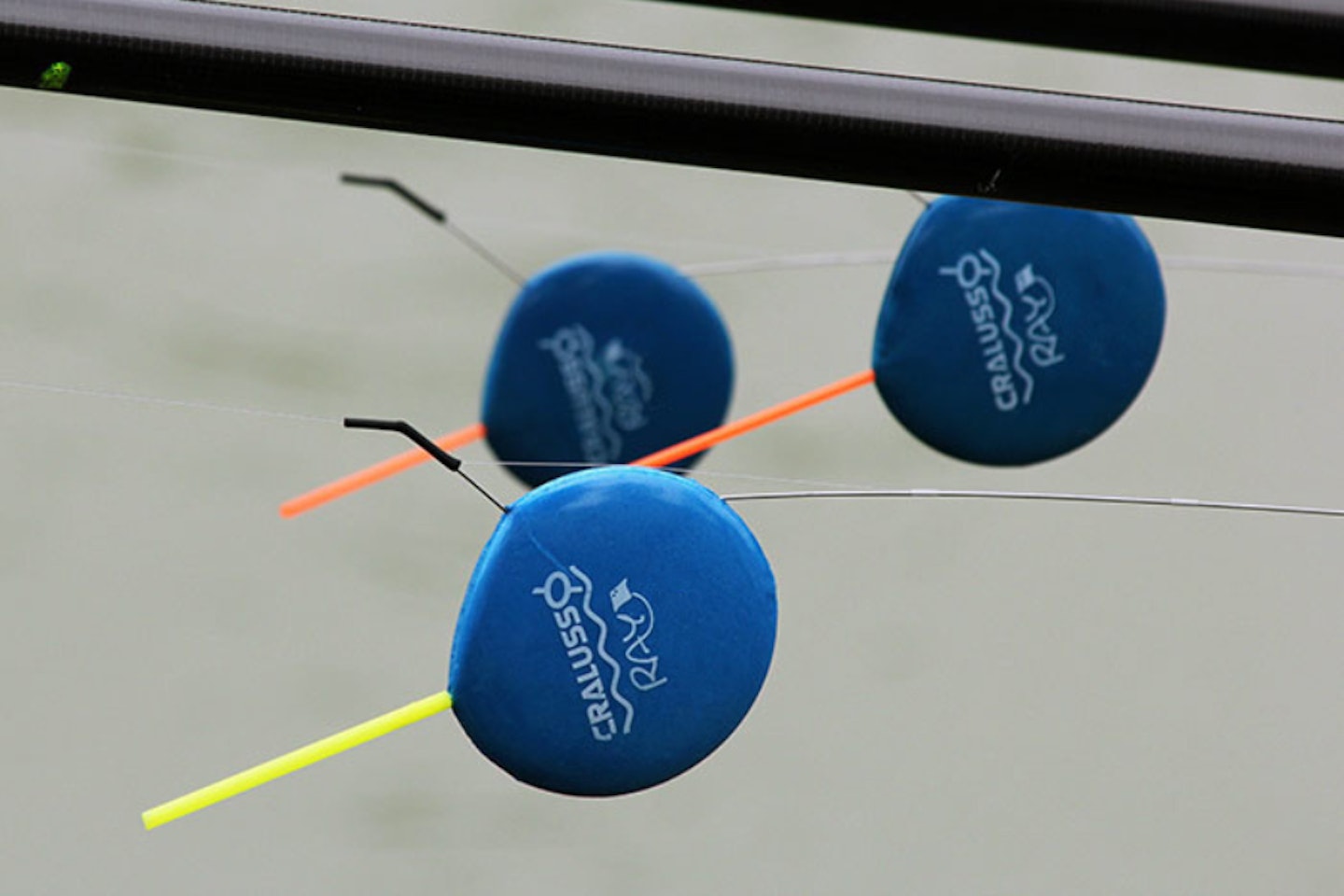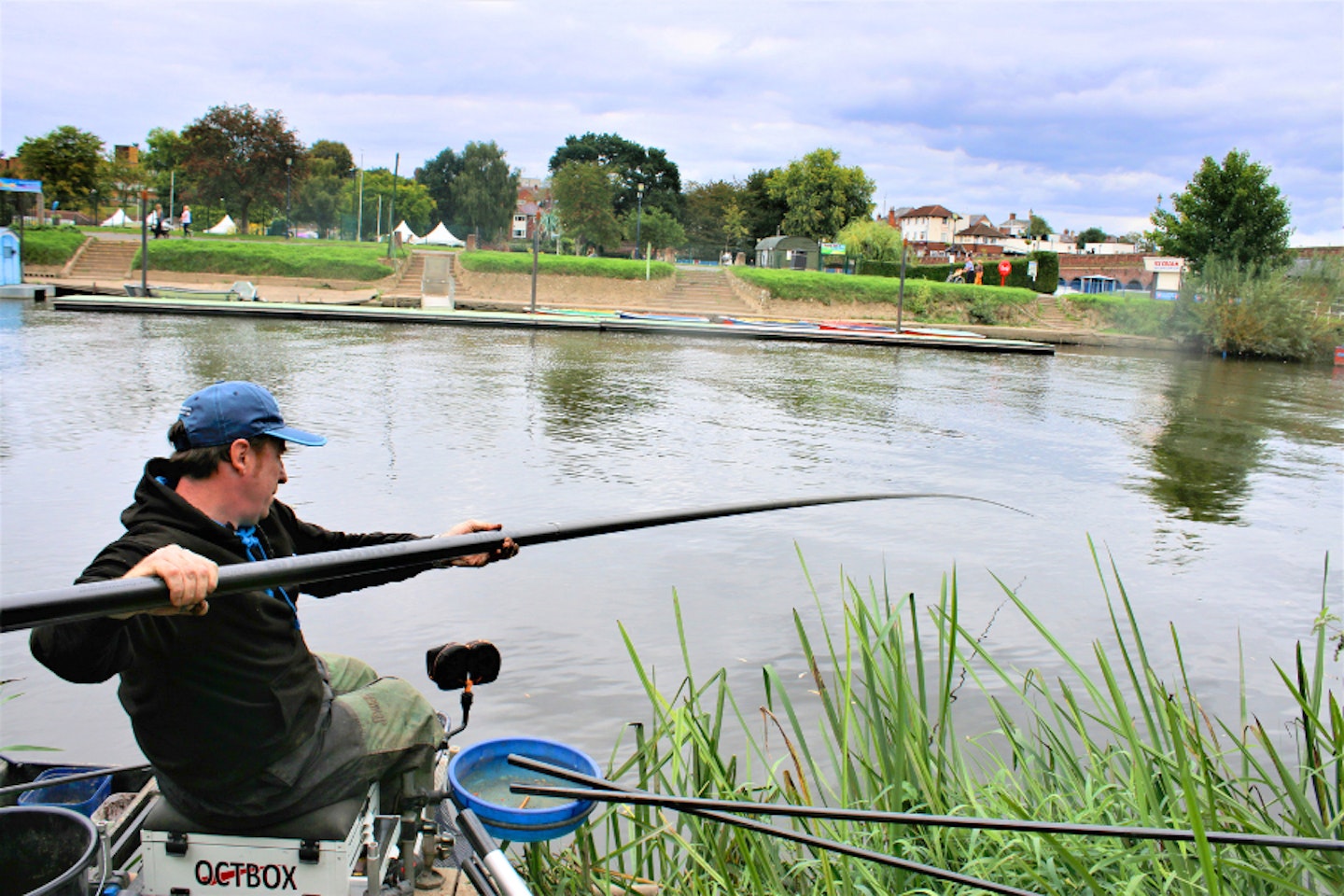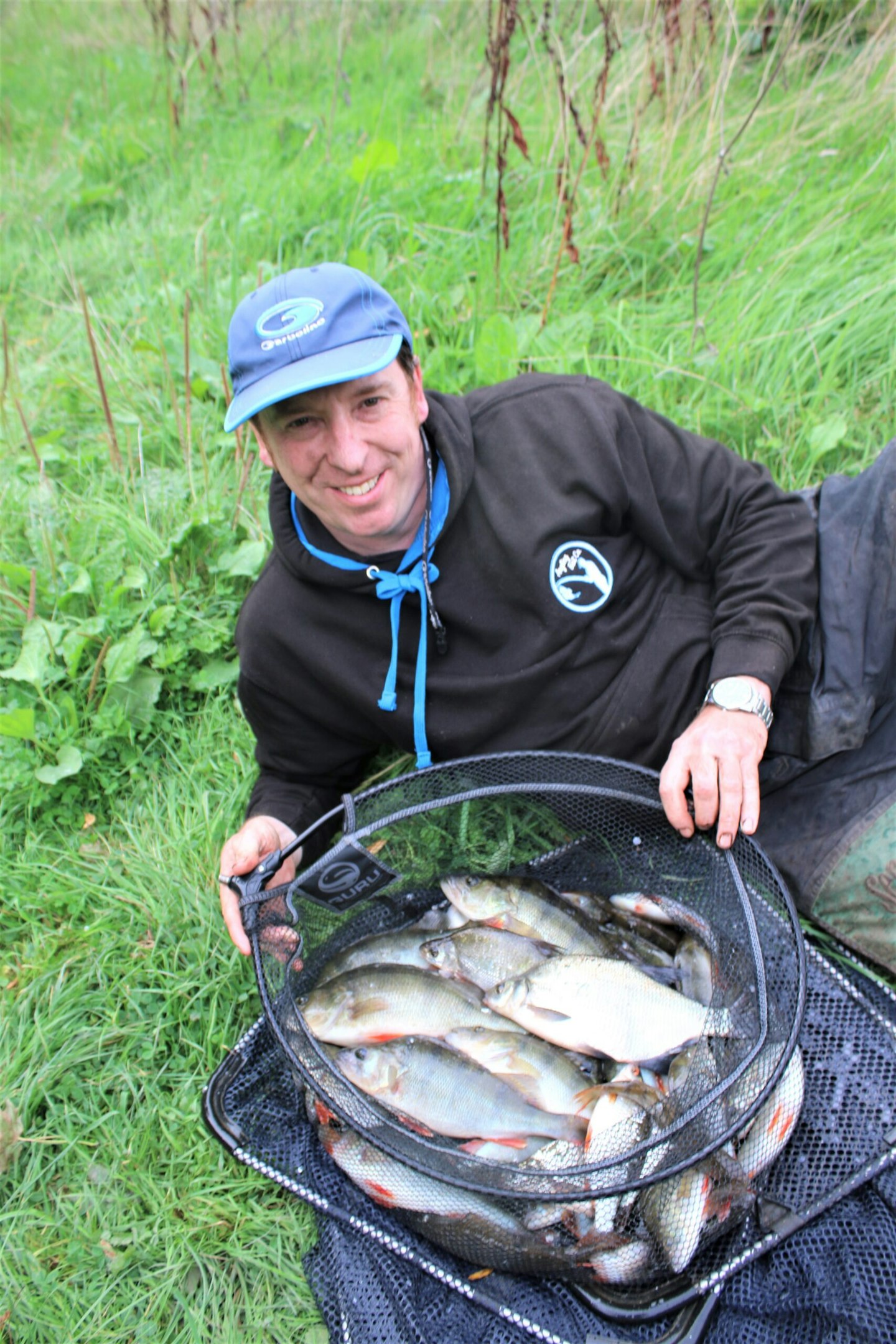The flat float, once a relatively uncommon tool in UK angling, has gained significant popularity since England put it to effective use in the world championships in Paris in 2001. Its effectiveness in slowing down a hookbait, even in powerful currents, has made it a valuable asset for anglers targeting various species.
Versatility
While the flat float is often associated with flood conditions, it's equally effective on medium-flowing rivers. It's ideal for catching many river species in particular bream, skimmers, as these fish prefer a bait that's stood still or only slightly moving through the swim but is just as effective targeting chub and barbel.
A STRONG POLE IS ESSENTIAL FOR FLAT FLOAT FISHING, SEE OUR GUIDE TO THE BEST FISHING POLES FOR OUR PICK OF THEM.

How it works
The flat float's unique design allows it to turn thin side on into the flow, minimising the surface area for the current to grab hold of. This prevents the rig and bait from being pulled off the bottom, ensuring a more precise presentation.
Which flat floats
To effectively use a flat float, it's crucial to identify the areas with the strongest current in the river. These areas are typically where you'll find the most active fish.
Selecting the appropriate flat float size is crucial for a successful session. Consider the river's current strength and the target species. A 2g float might suffice on rivers with moderate tidal pull, larger rivers may require floats in the 4g to 6g range. To determine the ideal size, set up a few different options and observe how they behave in the water. The float's bristle should stand bolt upright when held still, indicating that it's heavy enough to counteract the current. However, it's essential to use the lightest float possible to maintain a delicate presentation.

Plumbing up
Plumbing up is a critical step in flat float fishing, ensuring that your hookbait is presented at the desired depth. Some anglers use clip-on plummets, a more common method involves using a normal plummet and adjusting the depth of the rig.
Here's a step-by-step guide to plumbing up your flat float:
Position the Olivette: Place the olivette around 2 feet from the hook.
Adjust Depth: Lower the rig until the olivette is just off the bottom.
Add Dropper Shots: Leave three dropper shots laid on the riverbed to help keep the hookbait pinned still.
This setup will typically result in the hookbait being around 18 inches overdepth. However, you may need to adjust the depth depending on the current strength and your desired presentation. If the river is pulling strongly and you want to slow the bait down, you can increase the amount of line you lay on the bottom up to 3 feet.
Remember that the olivette should make up the bulk of the float's weight, as the dropper shots won't significantly affect the float's buoyancy. By carefully plumbing up your rig, you can ensure that your hookbait is presented perfectly.
SOMETIMES THE RIVER CONDITIONS WILL NOT SUIT A FLAT FLOAT PRESENTATION, SO A ROD AND LINE APPROACH IS NECESSARY, CHECK OUT OUR CHOICE OF THE BEST BARBEL RODS.

Tackle to use
To effectively fish with a flat float, use a sturdy pole, strong line, and a suitable hook size. Opt for a durable mainline 0.15mm and a short 6-inch hooklink. Choose a size 14 hook for worms or a size 16 or 18 for maggots. A solid No 6 elastic is recommended. Adjust the line length between the float and the pole based on wind conditions, using a big backshot in windy weather to maintain control and stability.
MARGIN POLES CAN BE A GOOD STRONG TOOL FOR FLAT FLOAT FISHING, SEE OUR PICK OF THE BEST MARGIN POLES.

Feeding
Groundbait plays a crucial role in attracting fish to your chosen swim and hopefully creating a feeding response. A suitable groundbait mix for flat float fishing should be a combination of a heavy sticky mix and a strong fishmeal groundbait, with added casters and chopped worm, can be a highly effective choice. This mix offers a variety of flavours and textures that are appealing to fish.
How to feed
Initial Feed: Throw in six large balls of groundbait to a tight spot to create an immediate bed for the fish.
Topping Up: Use a pole cup to add more groundbait as needed. Only throw additional balls by hand if the fish are actively feeding and accuracy is less critical.
Timing: Add more groundbait when the skimmers become less active or if you're only catching small fish.
GETTING TO AND FROM THE RIVER BANK WITH YOUR TACKLE CAN BE A CHALLENGE BUT THE BEST FISHING BARROW AND TROLLEYS WILL HELP MAKE IT MUCH EASIER.

Maintain presentation
Keeping your pole tip submerged in the water can significantly improve the stability of your flat float rig, especially in windy conditions. This technique helps to reduce the impact of wind and waves on your line, allowing for a more precise and controlled presentation of your bait.
While submerging the pole tip may require a slightly harder strike to pull the float and line through the water, the benefits in terms of stability and accuracy often outweigh the additional effort. By keeping the pole tip submerged, you can maintain a more consistent presentation and increase your chances of landing fish.
RETAINING YOUR CATCH FOR A MATCH OR A CATCHSHOT REQUIRES THE BEST FISHING KEEPNETS, OUR GUIDE GIVES OUR PICK OF THE BEST.

